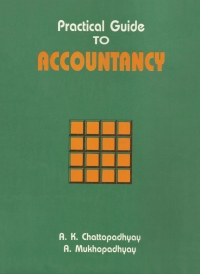Assume the following budgeted information for a merchandising company: . Budgeted sales (all on credit) for November, December, and January are $243,000, $213,000, and $204,000, respectively. Cash collections related to credit sales are expected to be 75% in the month of sale, 25% in the month following the sale. The cost of goods sold is 70% of sales. Each month's ending inventory equals 15% of next month's cost of goods sold. 30% of each month's merchandise purchases are paid in the current month and the remainder is paid in the following month. Monthly selling and administrative expenses that are paid in cash in the month incurred total $22,500. Monthly depreciation expense is $6,500 The budgeted net operating income for December would be: Multiple Choice $41,400 $15,344 $21,844 Assume a merchandising company's estimated sales for January, February, and March are $104,000, $124,000, and $114,000, respectively. Its cost of goods sold is always 60% of its sales. The company always maintains ending merchandise inventory equal to 15% of next month's cost of goods sold. It pays for 30% of its merchandise purchases in the month of the purchase and the remaining 70% in the subsequent month. What are the cash disbursements for merchandise purchases that would appear in the company's cash budget for February? Multiple Choice $66,990 $63,990 $68,990 $69.990 Assume a company manufacturing many products, one of which normally sells for $48 per unit. The company's accounting system reports the following unit product cost for this product: Direct materials Direct labor Manufacturing overhead Total cost Per Unit $18 12 10 $40 The company estimates that $3 of its manufacturing overhead varies with respect to the number of units produced. The remainder of its overhead is fixed and unaffected by the volume of units produced within the relevant range. A customer has approached the company with an offer to buy 300 units of a customized version of the product mentioned above for $39. The company can fulfill this order using existing manufacturing capacity. To accommodate the customer's desired product design, the company would incur additional direct materials cost per unit of $3. It would also have to buy a special tool for $440 that has no other use or resale value after the special order is completed. Assuming that accepting this order will not have any effect on sales to other customers, what is the financial advantage (disadvantage of accepting the special order? Multiple Choice 51300) $900 Assume the following information: Per Unit $40 15 Amount $300,000 112,500 187,500 56,000 $131,500 Sales Variable expenses Contribution margin Fixed expenses Net operating income $25 The dollar sales to attain a target profit of $203,000 is: Multiple Choice $431,500. $334,500 $414,400 $690,667










